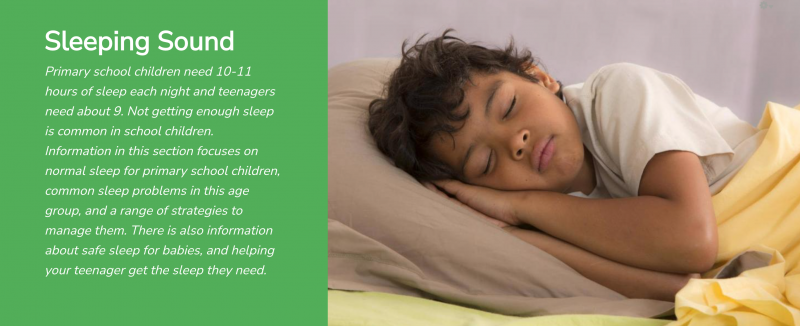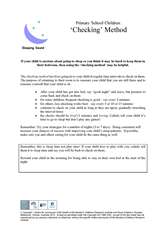Checking Method For Managing Sleep Problems
Checking Method For Managing Sleep Problems
If your child is anxious about going to sleep or you think it may be hard to keep them in their bedroom, then using the 'checking method' may be helpful.
Key points about the checking method for managing sleep problems
- the checking method involves going into your child's room at regular time intervals to check on them
- the purpose of returning to their room is to reassure your child that you are still there and to reassure yourself that your child is ok
- try your strategies for a number of nights
- being consistent will increase your chances of success with improving your child's sleep patterns
This page is about sleep in primary school children. It's part of a whole section on sleeping sound.
What does the checking method involve?
If your child is anxious about going to sleep or you think it may be hard to keep them in their bedroom, then using the 'checking method' may be helpful.
The checking method involves going into your child's room at regular time intervals to check on them. The purpose of returning to their room is to reassure your child that you are still there and to reassure yourself that your child is ok.
- after your child has got into bed, say "good night" and leave, but promise to come back and check on them
- for some children, frequent checking is good – say every 2 minutes
- for others, less checking works best – say every 5 or 10 or 15 minutes
- continue to check on your child as long as they are upset, gradually stretching the interval times
- the checks should be brief (1 minute) and boring - calmly tell your child it's time to go to sleep but don't play any games!
Remember: Try your strategies for a number of nights (3 to 7 days). Being consistent will increase your chances of success with improving your child's sleep patterns. If possible, make sure you and others caring for your child do the same thing as well.
Remember, this is sleep time not play time. If your child tries to play with you, calmly tell them it is sleep time and say you will be back to check on them.
Reward your child in the morning for being able to stay in their own bed at the start of the night.
See more KidsHealth content on sleeping sound
This page last reviewed 16 March 2023.
Do you have any feedback for KidsHealth?
If you have any feedback about the KidsHealth website, or have a suggestion for new content, please get in touch with us.
Email us now

